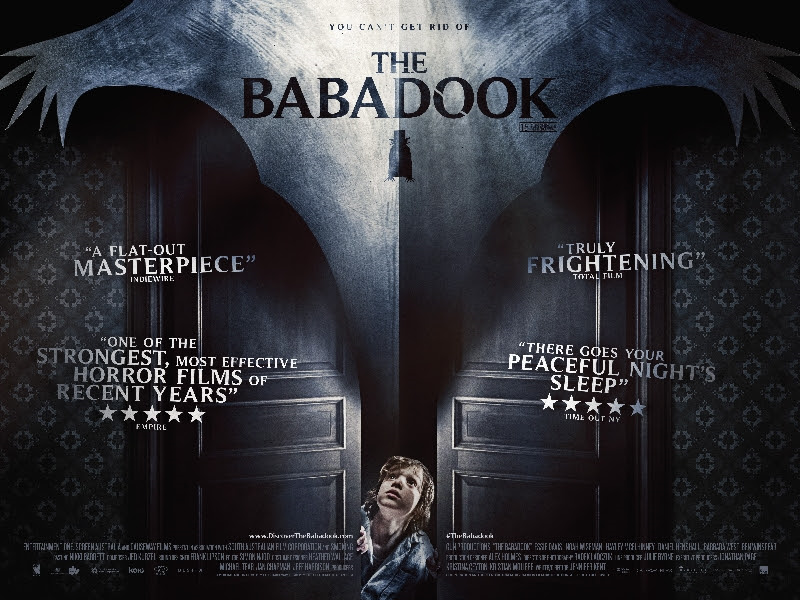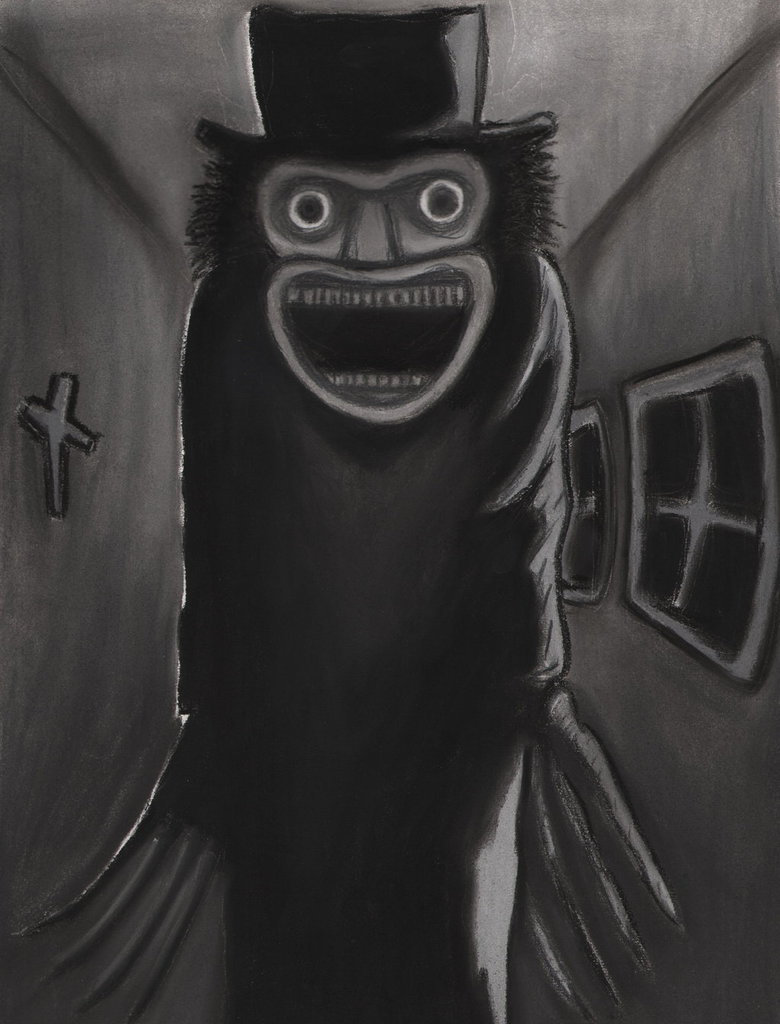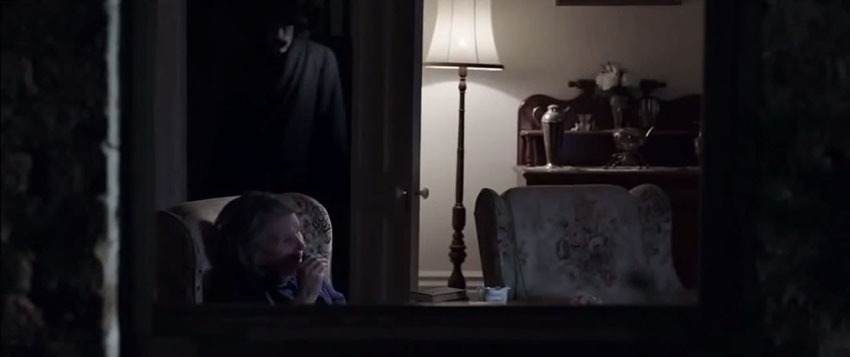The Scriptshadow Newsletter, featuring a review of one of the latest spec sales AND news about The Scriptshadow 250, has been SENT. If you did not receive the newsletter, check your SPAM and your PROMOTIONS folders to make sure it isn’t there.
Genre: Horror
Premise: A single mother starts to turn against her developmentally challenged young son when he insists that he’s being visited by a mythical fairy tale creature named “The Babadook.”
About: The Babadook first took the movie-going world by storm during a midnight screening at Sundance, where it instantly broke through and became a buzz-worthy hit. Originally released in Australia, it’s just now coming to the U.S., where it’s in limited release and available on Itunes. Inspired by filmmakers such as David Lynch and Lars Von Trier (whom she worked for once), writer-director Jennifer Kent went into her first directing experience terrified but confident. She felt that if the offbeat and unorthodox Von Trier could direct a film, that she could probably pull one off herself. Of course, she had to make SOME concessions. She originally wanted to shoot the movie in black and white, but was talked out of it by her understandably wary producer.
Writer: Jennifer Kent
Details: 93 minutes
One thing becomes clear as you start watching The Babadook: It’s different. There’s a subdued understated quality to the filmmaking that’s mildly off-putting. I don’t know how to describe it other than to say it’s “lonely.”
Sometimes that works for the movie and sometimes it doesn’t. Because The Babadook really is its own thing. A contained thriller almost, it locks you into this house with a mother and son and keeps you there against your will. For that reason, the film always feels a little claustrophobic. Normally that would be a good thing for a horror film. But is this a horror film?
Some could argue that The Babadook is more of a drama than anything. And Kent seems to support this take when she says she never overtly tried to create a scare in the movie (although I might argue that point with the terrifying Amelia-hiding-under-the-covers “Baaaaa-baaaaaa-doooooook” moment).
But while the movie struck a chord in me in a way that the “Ouijas” of the world could never accomplish, I’m still not sure how I feel about Baba. Maybe expectations have crippled my ability to see the film objectively. I wanted to be scared but instead I was kind of tricked into watching a troubled mother-son story. But isn’t that what all good movies do? Lure you in with the hook then keep you there with the characters? Uggghhhh, my mind says yes but my horror-loving heart says that wasn’t enough!
The Babadook is a simple story. Amelia is a single mother trying her hardest to raise her 6 year old son, Samuel. Samuel’s kind of a troubled kid. He’s prone to bouts of screaming and delusions, making the already difficult task of raising a child THAT much more difficult.
Well, it’s about to get even more difficult. Amelia starts catching Samuel in his room talking to someone, except there’s no one there. When she asks him about it, Samuel says he’s talking to the “Babadook,” the spooky imaginary character from one of his children’s pop-up books.
We eventually learn that the reason there’s no father in this picture is because he died when their car crashed while racing to the hospital during Amelia’s labor. Samuel’s birth literally killed his father, and there’s some deep buried resentment from Amelia because of it.
As Samuel becomes more and more insistent that Mr. Babadook is real, Amelia finally starts to crack, and all those extra hours taking care of her troubled child turn her into a monster hell-bent on killing her son. Thus the question arises. Who’s the real Babadook? The man in the book or Amelia herself?
What’s that old saying? “Be careful what you wish for?” Not long ago after watching Doll Shit – I mean, Annabelle – I complained that horror movies were getting too light. Writers weren’t delving into their characters and those characters’ psyches and finding those evil nooks and crannies that bring true horror to life.
Well, that’s exactly what The Babadook is. It’s a heart-wrenching EXTREMELY intense look at a fractured and complicated mother-son relationship, one where the mother starts to lose it, and becomes convinced that her child must pay the ultimate price. But if this is what I wanted, why don’t I feel satisfied?
I mean this IS what memorable horror movies do. They’re so realistic that you’re afraid they could actually happen. Look at The Exorcist and how realistically that whole situation was portrayed. You didn’t get characters opening bathroom mirrors to look for toothpaste, then closing them, only to see a skeleton face behind them in the reflection. You got those terrifying trips to the hospital with shock therapy, where a mother watched helplessly from outside the room as her daughter was tortured.
That’s the same way The Babadook approached its horror.
And yet… and yet… it felt TOO raw. TOO intense. There’s a scene late in the movie where the mom is so hell-bent on killing her kid that I thought to myself, “This isn’t a horror movie any more. This is just a fucked up mom who wants to kill her child.” It was… disturbing.
With that said, The Babadook is still a film worth seeing because it does something so few horror movies actually do. It dares to be different. As Kent says in one of her interviews, she had no interest in creating any jump scares. This is a movie where the horror gets under your skin and lives inside of you. Maybe that’s why it’s troubling me so much.
But yeah, I mean, look at the way Kent dealt with the story’s monster, which I thought was really clever. We never get a completely clear look at the Babadook, but from what we do see, it’s got this paper-mache design to it, as if it’s being plucked right out of the pop-up Mister Babadook book. How often do we get a unique monster in a horror script? Not often.
Another thing I noticed here was that this was a female writer. You could really tell that. And I don’t say that in a good way or a bad way, but a way in which you could tell this was a different point of view from what we’re used to seeing in horror, where the scares are less foreplay and more “straight to the deed.”
Kent inhabited her lead female character in ways I just don’t see men do. I mean, I see good male writers inhabiting their male characters. But The Babadook was a great reminder that the female characters need just as much of your infatuation as the male ones. You can never BE female if you’re a male. But you can do your best to ask yourself, “What would a woman do in this situation?” “What would a woman think in this situation?” You need this approach if you’re going to add even a fraction of authenticity to your female characters.
Lastly, I just wanted to say that it’s okay to include things in your horror script that people have seen before. For example, The Babadook is built on the age-old conceit of the child who talks to an invisible person. How many times have we seen that before? But it’s okay as long as you’re making a concerted effort to actively avoid cliché in as many other of your choices as possible. The core of this story is an intense honest unique relationship between mother and son that we haven’t seen before in a horror film. And since that’s such a dominant part of the script, we don’t see the “kid sees invisible people” moment as cliché. We only see that sort of thing as cliché when all the rest of your choices are cliche.
[ ] what the hell did I just watch?
[ ] wasn’t for me
[x] worth the price of admission
[ ] impressive
[ ] genius
What I learned: One of the ways to make your script stand out – and horror is a great place to do this – is to tackle taboo or dangerous subject matter. A big reason The Babadook has risen above all these other lame wanna-be-horror movies, is that it presents a truly terrifying situation – a mother who wants to hurt her child. That’s not a comfortable or safe situation to document in a story. Which is why this movie hits the viewer so hard.
What I learned 2: Make sure the creature in your horror film is born out organically from the story. This will ensure that you create something unique. Too many writers only care about creating a cool scary-looking monster. Instead, figure out where your creature is from, and build the monster from there. So if it’s from underground, it might be draped in weeds. If it’s from a giant farm, it might have an Scarecrow-like appearance. In this case, the monster came from a pop-up book, so it had a pop-up paper mache look to it.




